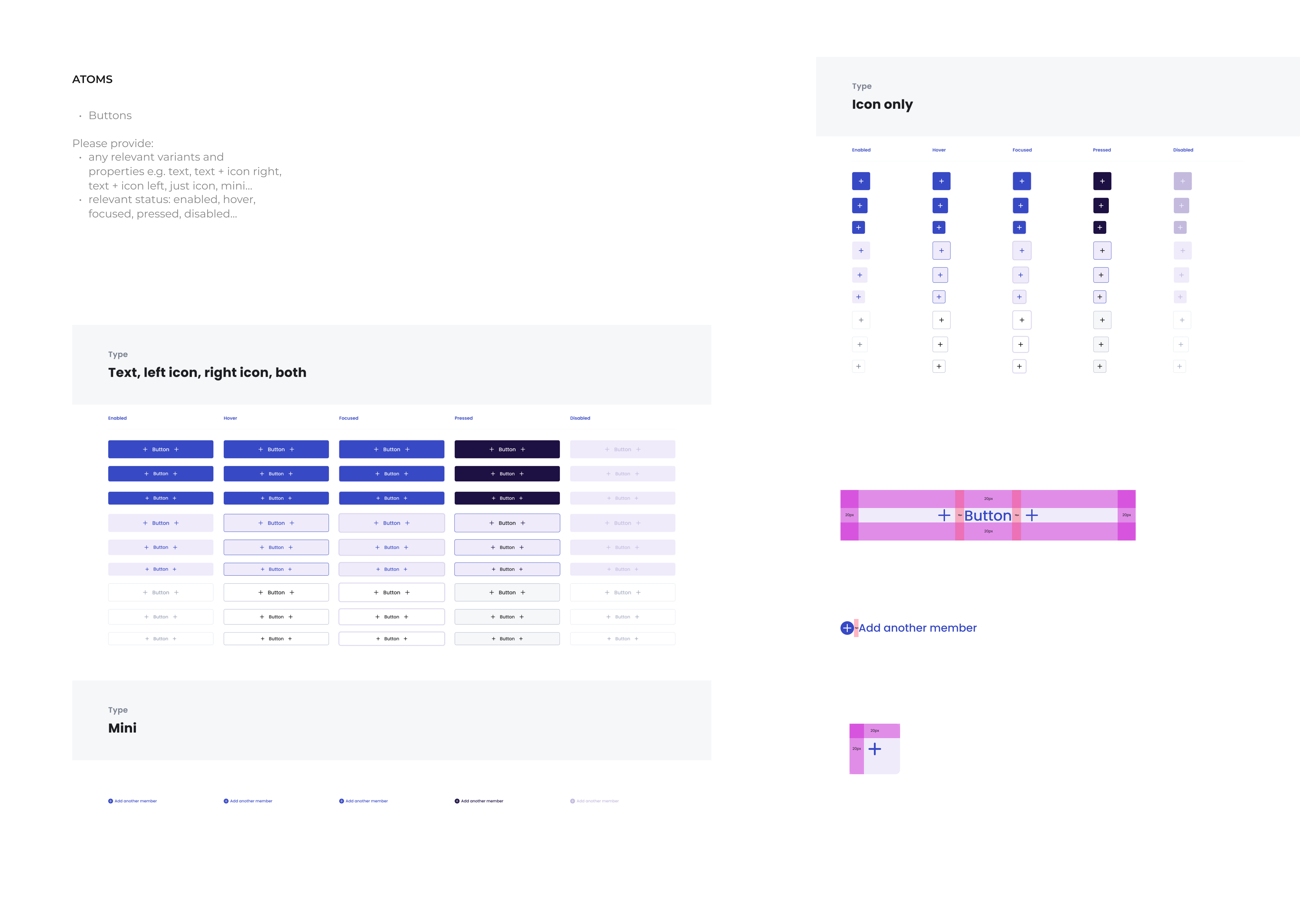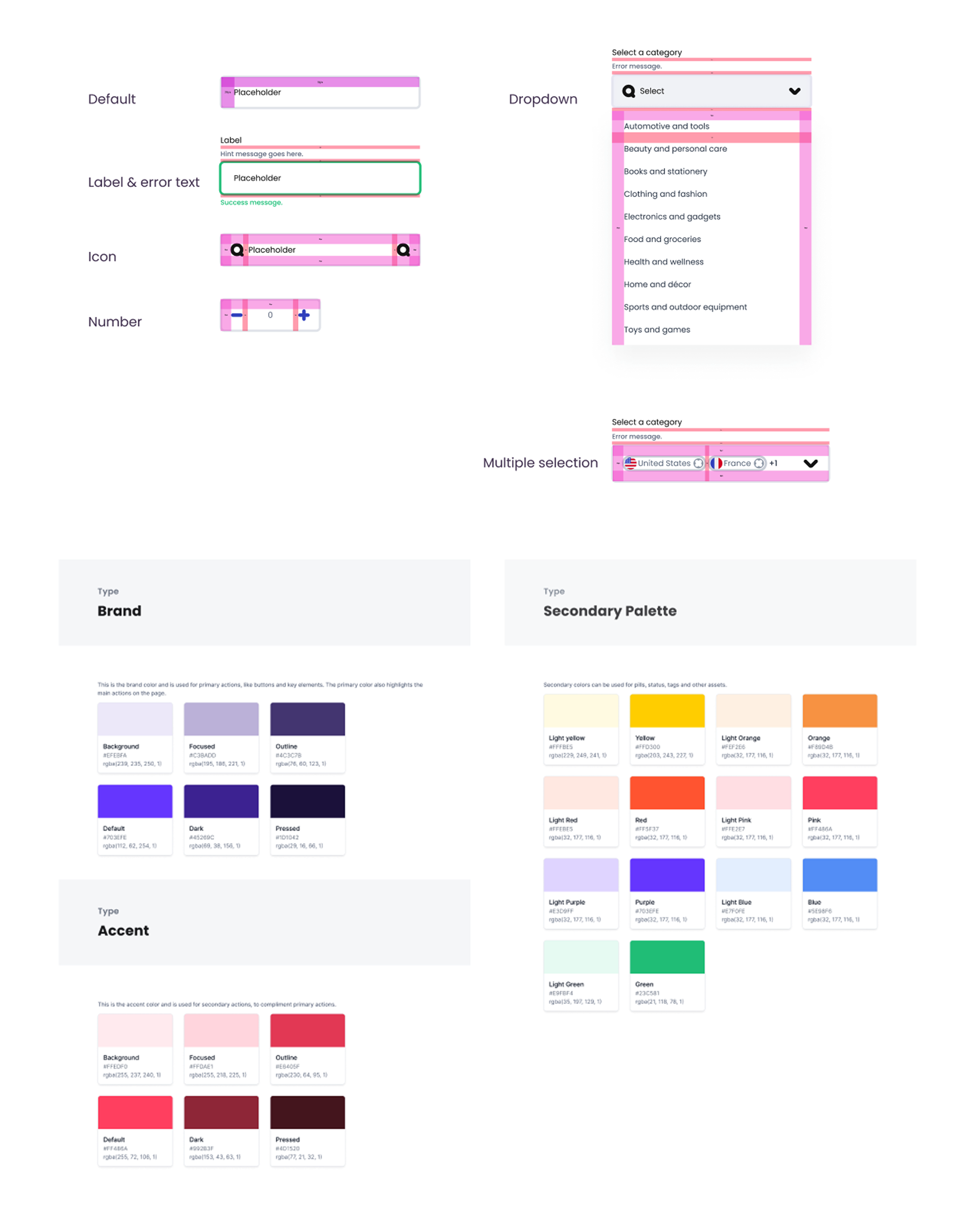Equipes
Equipes is a business management system designed to help small businesses eliminate wasted effort, automate workflows, and scale efficiently. With a modular approach, it enables teams to focus on meaningful work without unnecessary complexity. AI-driven automation, offline functionality, and seamless integrations set Equipes apart as a powerful, user-friendly platform tailored for small businesses.
Built by successful small business owners, Equipes understands the unique challenges of growing companies and provides a streamlined solution that adapts to their needs.
The challenge
As Equipes evolves, maintaining consistency, efficiency, and scalability has become a growing challenge. The absence of a structured design system led to inconsistencies in UI, inefficient collaboration between designers and developers, and increased development time. With the need to rapidly scale and support a diverse user base, Equipes required a robust, modular design system to ensure a seamless and intuitive user experience.
This project worked in parallel with our "Solving UX Challenges to Unlock Product-Market Fit" initiative, ensuring that usability improvements were implemented within a scalable framework. While that project focused on refining user experience and accessibility, this case study focuses and highlights the creation of a system that enables ongoing design consistency and efficiency.
Approach
To address these challenges, we focused on several key priorities:
-
Scalability: The design system had to support current and future growth, ensuring flexibility for new features and integrations.
-
Consistency: A unified UI library would establish visual harmony across desktop and mobile applications.
-
Efficiency: Optimising the design-to-development workflow would minimise rework and accelerate product development.
-
Accessibility: The system needed to comply with WCAG 2.1 standards, ensuring usability for diverse audiences, including those with disabilities.
A cross-functional team of UX/UI designers, developers, and product managers collaborated closely throughout the process. We conducted in-depth design thinking workshops, usability testing, and iterative design cycles to ensure that the system aligned with user needs while remaining highly adaptable for working teams.

Solution
The result was a comprehensive, structured design system that streamlined the design and development processes while enhancing the overall user experience. Key components included:
-
Component Library: A repository of reusable UI components, from buttons and forms to modals and navigation elements.
-
Design Tokens: Standardised values for colors, typography, spacing, and shadows to maintain consistency across the platform.
-
UI Guidelines & Documentation: Detailed guidelines on component usage, interaction states, and accessibility best practices.
-
Prototyping & User Flows: Interactive prototypes illustrating user journeys and interactions.
-
Handoff & Collaboration Tools: Documents in Figma, a design and collaboration tool with Dev Mode and VS Code integrations for seamless design-to-development transitions.
-
Versioning & Change Management: A structured process for updating the design system while maintaining backward compatibility.
This system not only addressed immediate UX/UI concerns but also laid the foundation for future iterations, ensuring the product could evolve without compromising design integrity.

Results
The implementation of the design system led to measurable improvements across various areas:
-
Improved Efficiency: Reduced design inconsistencies and accelerated development cycles, leading to faster feature releases.
-
Enhanced Collaboration: Designers and developers worked more effectively with a structured handoff process, minimising back-and-forth.
-
Future-Proof Scalability: A modular system that allows for easy expansion and adaptation to new business needs.
-
Consistent User Experience: A cohesive design language that improved usability and engagement across all devices.
-
Reduced Development Costs: Minimised rework and streamlined workflows, leading to cost savings.
By establishing a robust design system, Equipes is now positioned to scale seamlessly while maintaining a high-quality, user-friendly experience.
This case study complements our "Solving UX Challenges to Unlock Product-Market Fit" work by ensuring that the usability enhancements we implemented are consistently applied across the entire platform, setting Equipes up for long-term success.